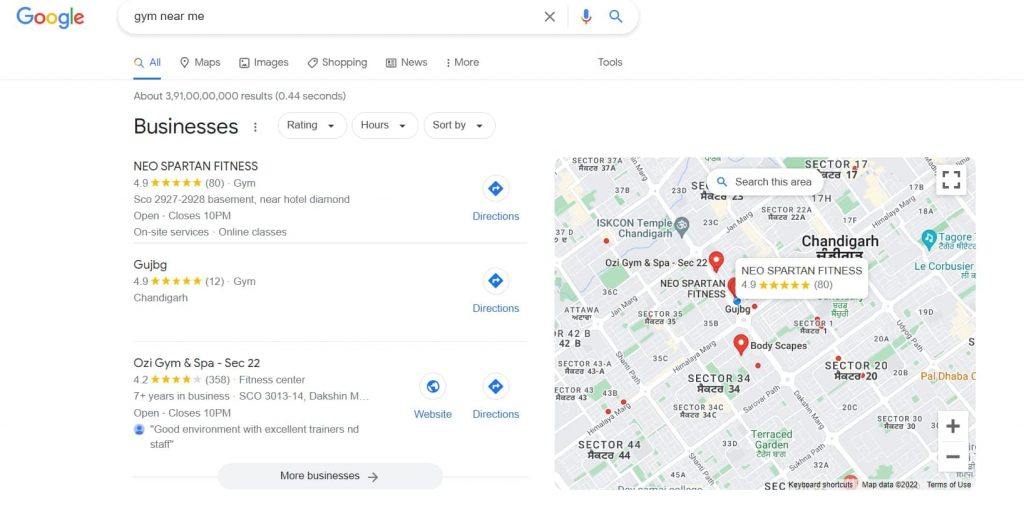Do you run a local business that is having trouble gaining recognition and sales in your town? If the answer is yes, focusing on hyperlocal marketing is one of the best things you can do for your company right now.
When you conduct a Google search for a service, such as a hospital, hotel, or restaurant, local businesses will appear at the top of the list of results. This is entirely by design. Google uses your location to provide you with a list of nearby businesses.
If you are the owner of a large business, you will probably use national ad campaigns to attract potential clients. However, this strategy is ineffective for small regional enterprises. It’s not just expensive; it’s also a waste of money.
This is because, as a local business owner, the majority of your sales come from people who can easily walk or drive to your location. Instead of spreading advertising, it makes more sense to use a hyperlocal market strategy.
But what exactly does hyperlocal marketing mean? And how is it different from the traditional marketing strategies you use?
This short guide covers the basics and benefits of hyperlocal marketing. Here are 8 practical strategies for how to run a hyperlocal campaign for your audience. Ultimately, you’ll understand what “hyperlocal” really means and how to run this type of marketing campaign in your business.
Let’s take a closer look at what we are going to discuss:
- Business Listings
- Content Marketing
- Search Advertising
- Email Marketing
- SMS Marketing
- Location Based Marketing
- Re-inventing OOH Advertising
- Local SEO
What is Hyperlocal Marketing?
It’s marketing and advertising that’s precisely targeted to a specific local area or localized market. Hyperlocal marketing is becoming more important as the use of mobile devices increases.
“Near me” searches have increased by 500% in two years.
These are searches where users want to buy goods and services near their current location. People are looking for shops, restaurants, and services that meet their immediate needs. So the commercial intent for these is quite high.
Hyperlocal market is targeting potential customers in a specific geographical location. The idea behind this strategy is to optimize your business with “nearby” searches to increase walk-ins and inquiries.
Let’s say you move to a new city and are looking for a gym. You don’t want to drive miles to get to your old gym, so you’ll probably search for “gyms near me” or something like that. The search results you see at the top are no coincidence. These businesses have used hyperlocal market tactics to optimize their online presence and achieve higher visibility.

The same strategy can be used by almost any business that runs a physical store. Cafes, restaurants, hotels, supermarkets, bookstores, salons, and many other businesses can all benefit from hyperlocal marketing.
Over the last few years, consumer attitudes to “nearby” queries have changed dramatically. Previously, most people included the “near me” tag in their searches. That’s not the case anymore.
According to Google, people simply search for restaurants and shops and expect search engines to automatically return the “nearby” results from localized markets.
Google has been adjusting its algorithms in recent years to improve local searches. It only serves the specific results the user is asking for.
This means businesses using hyperlocal markets can get more traffic and overall brand awareness through the hyperlocal marketplace and other relevant searches.
You’ll learn 8 key hyperlocal marketing strategies in this guide to reach your target audience more effectively.
8 Creative Hyperlocal Marketing Strategies for Growth
- Business Listings
If you haven’t optimized your online business listing yet, now is the time to do so. This is because the entries in these listings determine whether the company appears in the correct location during searches. Prioritize updating your Google My Business and JustDial listings, and make sure your business information on your Facebook Page is up-to-date and accurate.
Be sure to include your business name, address, phone number, and website, as well as information that will help people decide to visit, such as hours of operation.
Here is a hot tip for businesses with multiple locations. Create a landing page specific to each location with information targeted to that area. These can then be used in your business listings for even better hyperlocal targeting
- Content Marketing
Content marketing is essential to any hyperlocal market campaign. This is because people search for your business online before going to your store or making a purchase. High-quality, relevant content not only helps you get found, but it also retains visitors, increases brand awareness, and builds trust. This will result in more store visits and more sales.
When creating content for a local market, it’s important to use the most commonly used language in that area. Depending on where you’re targeting, the same object may be called a bike or a motorcycle. Getting it right makes your content more relevant.
- Search Advertising
Search engine advertising is another useful hyperlocal marketing strategy. We know your target audience is looking for local information, so target your ads accordingly. Ads are keyword-based, so your ads should target keywords related to both your location and your product or service. You can also hyper-target your ads so that they only appear to people in specific geographies.
To make your ads even more effective, ensure that people who follow ads on your site find relevant and up-to-date content on your business blog. Don’t forget to tag local content keywords related to this content.
- Email Marketing
But don’t discount the potential of hyperlocal marketing with email. Most marketers already use some form of mailing list segmentation to send more relevant emails.
With hyper-local targeting, you can make your emails even more relevant by sending different emails with offers and promotions based on the email recipient’s location. The more relevant your email is, the more likely people are to open it and take action.
For example, if you know that it is going to rain heavily throughout the week, it’s a great time to update customers in the local market about your collection of raincoats, umbrellas, and rain boots.
- SMS Marketing
Now that everyone has a mobile phone, SMS marketing has become an important hyperlocal marketing strategy. According to statistics, the SMS message open rate is about 86%, and people tend to respond quickly to SMS messages. If you have local events and offers, this location-based marketing method can help you increase walk-in traffic and sales.
- Location-Based Advertising
Want to take hyperlocal targeting a step further? Show ads based on where you are, where you are, and where you’re going with location-based advertising and proximity targeting. If a person just passing by a shoe store sees an advertisement with a suitable offer, they may turn around.
Combine this with location and weather-based targeting to ensure the right ad is shown to the right person at the right time. It’s like the corner shop that puts up its collection of seasonal smoothies when it starts to feel like one big sauna out there.
- Reinventing OOH Advertising
Out-of-home (OOH) advertising takes companies back to the early days of advertising. In a way, it is the original location-based advertisement. Traditionally, using foot-on-street marketing, retailers have advertised on nearby billboards or run promotions near their stores. But now marketing in your area is going digital.
These OOH ads today harness the power of mobile location technology to deliver relevant ads in high-traffic areas. With this hyperlocal targeting strategy, you can reach consumers in specific blocks, not just in specific cities. This reinvention of OOH is a winning strategy for increasing local traffic and sales.
- Local SEO
Increasing your online visibility requires an effective local SEO strategy. There are three things to watch out for here: customer reviews, quotes, and Google My Business optimization.
Customer reviews are essential to your SEO and buyer journey. Good reviews act as social proof and can drive more traffic to your business. Increased traffic tells search engines that your content is authoritative and it also increases your ranking.
In fact, reviews and ratings are widely known to be one of the most important local SEO factors to consider.
Citations are an important ranking factor as they increase the credibility of the company. Plus, citations can get you a lot of referral traffic, especially if your business is listed in reputable online directories.
Bonus Tip
You need to know how your local online marketing strategy is going when you begin. This means that you monitor user behavior on our website and analyze traffic quality from multiple sources such as Facebook Ads, Google Ads, and Instagram Stories.
Vaizle can help you with it. This tool provides insights into your content engagement and channel performance. Along with this you can do a comprehensive competitor analysis and keep track of your competitor’s brand activity.
The more detailed and accurate information you have, the more effective your hyperlocal strategy will be.
Summary
In this post, you’ve learned that the hyperlocal market can bring many benefits to your business. By showing ads that target small geographic locations, you can drive foot traffic to your store or location and increase brand awareness.
One of the best things about focusing on hyperlocal marketing is that you can reach your goals without spending too much time or money. Hyperlocal is affordable, has a high ROI, and is fairly easy to manage for local business owners.
